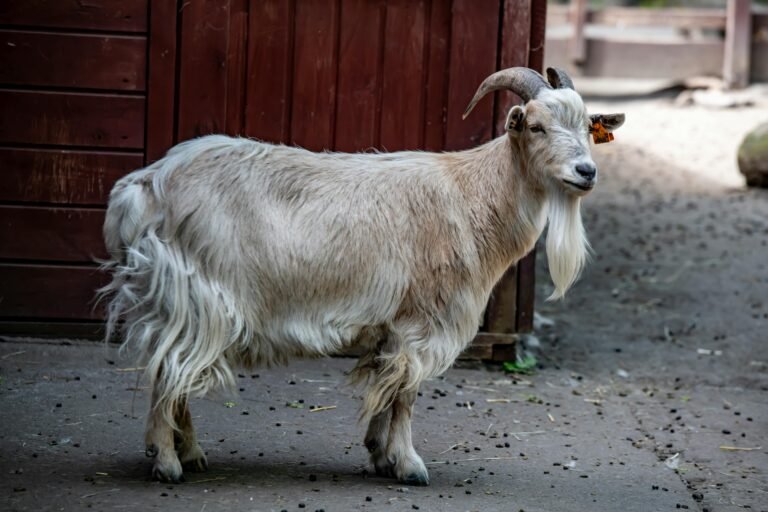
Top Diagnosis, Treatment and Prevention Strategies for Goat Worms
Raising goats and sheep comes with its challenges, one of the most pressing being the threat posed by internal parasites. Among these parasites, worms stand out as a significant concern, capable of causing serious health issues that can lead to weight loss, anemia, and even death if left unchecked. Understanding the types of worms, recognizing the symptoms, and knowing how to effectively treat and prevent infestations are crucial for maintaining a healthy and productive herd. In this guide, we’ll explore these aspects in detail, offering practical strategies that come from both experience and expertise.
Understanding the Types of Worms
When discussing worm infestations in goats, it’s essential to understand the different types of worms that can affect them. Three primary culprits tend to wreak havoc on herds:
Haemonchus Contortus (Barber Pole Worm)
The Barber Pole Worm, scientifically known as Haemonchus contortus, is notorious for its ability to cause severe anemia in goats. This blood-sucking worm thrives in warm and humid environments, making it particularly prevalent in regions with such climates. The female worms are prolific, laying thousands of eggs daily, which contaminate pastures and significantly increase the risk of infection. This worm’s impact can be devastating, often leading to weight loss and, in severe cases, death.
Trichostrongylus spp. (Stomach Worms)
Another common parasite is the Trichostrongylus spp., commonly referred to as stomach worms. These worms primarily affect the stomach lining of goats, resulting in poor nutrient absorption, diarrhea, and general weakness. Goats typically ingest these larvae while grazing on contaminated pastures. What makes Trichostrongylus spp. particularly challenging is its ability to adapt to different climates, making it a persistent threat across various environments.
Ostertagia spp. (Brown Stomach Worm)
The Ostertagia spp., or Brown Stomach Worm, is primarily found in the abomasum, the true stomach of goats. This worm can cause a noticeable decline in milk production, lethargy, and weight loss. The larvae of Ostertagia spp. are incredibly resilient, capable of surviving harsh weather conditions, allowing them to persist in the environment for extended periods.
Coccidia
Though not technically a worm, Coccidia are protozoan parasites that can cause severe damage to the intestines of young goats. Coccidia infections are common in kids, leading to diarrhea, dehydration, and stunted growth. The lack of immunity in young goats makes them particularly vulnerable to this parasite.

Recognizing the Signs of Worm Infestation
Early detection of a worm infestation is crucial to prevent severe health problems. Here are some signs to watch out for:
1. Weight Loss: A sudden, unexplained drop in weight is often the first indication of a worm problem. The metabolic demands of the parasites can lead to the depletion of vital nutrients, resulting in significant weight loss.
2. Diarrhea: Persistent diarrhea can be a clear sign of a worm infestation. The damage caused by worms to the gastrointestinal tract often results in changes in stool consistency.
3. Anemia: Pale gums and lower eyelids are telltale signs of anemia, particularly in cases of Haemonchus contortus infestations. The blood-sucking nature of this worm leads to a reduction in red blood cells, causing anemia.
4. Bottle Jaw: Swelling under the jaw, known as bottle jaw, is a severe symptom of Barber Pole Worm infestation. This condition is caused by fluid accumulation in the lower jaw tissues, indicating advanced infection.
Diagnostic Techniques
Once these symptoms are observed, it’s crucial to perform a fecal egg count to identify the specific type of worms affecting your herd. This diagnostic method involves analyzing a fecal sample under a microscope to count the number of worm eggs present. This information is vital for choosing the appropriate treatment strategy.
Treatment Options for Worm Infestations
Treating worm infestations in goats involves the use of deworming medications that target the specific type of worms present. Here are some common options:
1. Ivermectin: This broad-spectrum dewormer is highly effective against a wide range of worms, including the Barber Pole Worm. Ivermectin works by paralyzing the worms, making it easier for the goats to expel them through their feces.
2. Benzimidazoles: This class of dewormers, which includes Albendazole, is particularly effective against Barber Pole Worms. Albendazole disrupts the worms’ ability to absorb nutrients, leading to their eventual death. However, it’s important to be mindful of the potential development of resistance with frequent use.
3. Levamisole: Another broad-spectrum dewormer, Levamisole is effective against stomach and intestinal worms. It acts on the nervous system of the worms, causing paralysis and subsequent expulsion from the goat’s body.
When administering dewormers, it’s important to follow the recommended dosages and consider rotating between different types to prevent resistance from developing in the worm populations.

Prevention Strategies
Preventing worm infestations is as important as treating them. Here are some strategies to maintain a healthy herd:
1. Pasture Management
Effective pasture management is crucial in reducing the risk of worm infestations. Rotational grazing is a key strategy where goats are moved between different pastures, which helps break the life cycle of parasites and reduces the overall worm burden.
2. Fecal Egg Monitoring
Regular fecal egg monitoring allows you to detect worm burdens early and assess the effectiveness of your deworming program. By keeping a close eye on fecal egg counts, you can take timely action to prevent the escalation of worm infestations.
3. Quarantine New Additions
Introducing new goats to your herd carries the risk of bringing in parasites. Quarantine any new additions for at least three weeks to observe and treat them before integrating them into the main herd. This practice helps prevent the spread of parasites.
4. Nutritional Support
A well-balanced diet rich in vitamins and minerals is essential for boosting the immune system of goats, making them more resilient to parasites. Nutritional support is a critical component of maintaining overall herd health.
5. Selective Breeding
Over time, selective breeding for genetic resistance to worms can help develop a more resilient herd. By choosing breeding stock that shows natural resistance to worms, you can gradually reduce the impact of parasites on your goats.

Conclusion: Goat Worms Treatments
Worm infestations are a serious concern for anyone raising goats and sheep, but with the right knowledge and management practices, they can be effectively controlled. By understanding the types of worms, recognizing the symptoms early, and implementing targeted treatment and prevention strategies, you can protect your herd from the devastating effects of internal parasites. This proactive approach not only ensures the productivity of your herd but also contributes to a more sustainable and resilient farming operation.
Through my experience in goat farming, I’ve found that consistent monitoring, combined with strategic interventions, makes a significant difference in maintaining a healthy and thriving herd. The key is to stay vigilant and adapt your management practices to the specific needs of your environment and herd.
At Goaty Pedia, we’re passionate about all goat things! Our mission is to be the ultimate resource for goat enthusiasts, breeders, and caretakers who want to learn about and care for these remarkable animals. Thanks for visiting.
Web Crew © 2024 All Rights Reserved.

